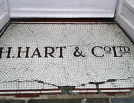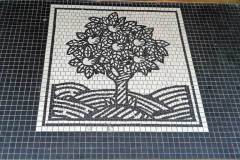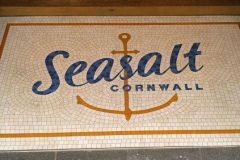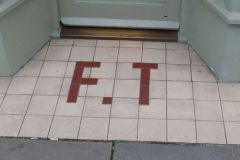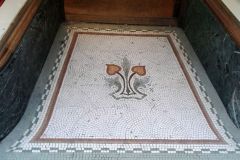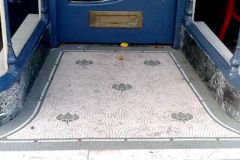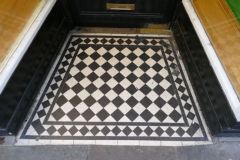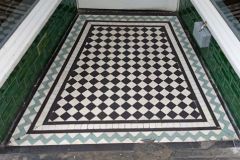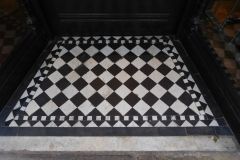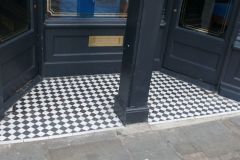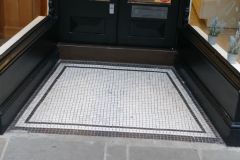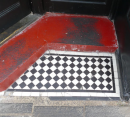Mosaics are wall or floor surfaces made from small pieces of tiles, stones, glass or other materials in pictorial or abstract patterns. The earliest mosaics in Canterbury are at the Roman Museum in Butchery Lane on the site of a Roman townhouse where a Roman pavement and corridor panels were discovered after the Second World War bombings. The museum has put its own modern mosaic on the street entrance and there are a number of other advertising and decorative entrance mosaics in the city.
Deakin was a menswear shop on the corner of Sun Street and Guildhall Street for 150 years. The site became a restaurant, La Trappiste, from 2010 to 2017 but then a new restaurant opened as Deakins, giving context back to the mosaics.
Another menswear shop was Woods, established in 1782 (see advertisement, right) at 19 St Margaret’s Street. It is now County Clothes.
Henry Hart (q.v.) was a pawnbroker and clothier with several shops including 13 Best Lane
Modern examples of shop entrance mosaics are Crabtree & Evelyn’s crabtree symbol in Burgate; Seasalt in the Marlowe Arcade; and Field & Trek’s initials in Palace Street, although it no longer has a store there.
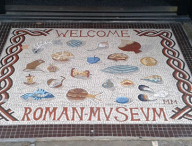
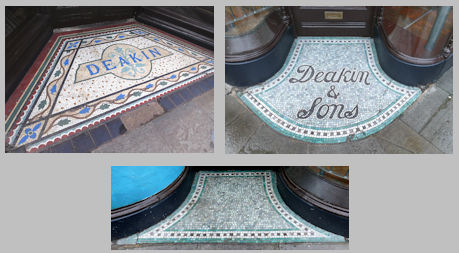
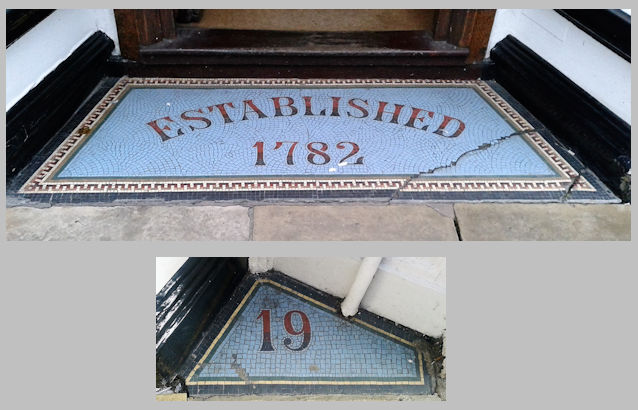
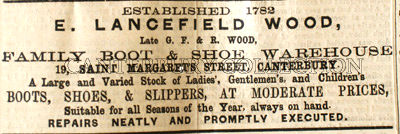
Other examples of mosaics can be found in St Peter’s Street, Palace Street and Sun Street.

